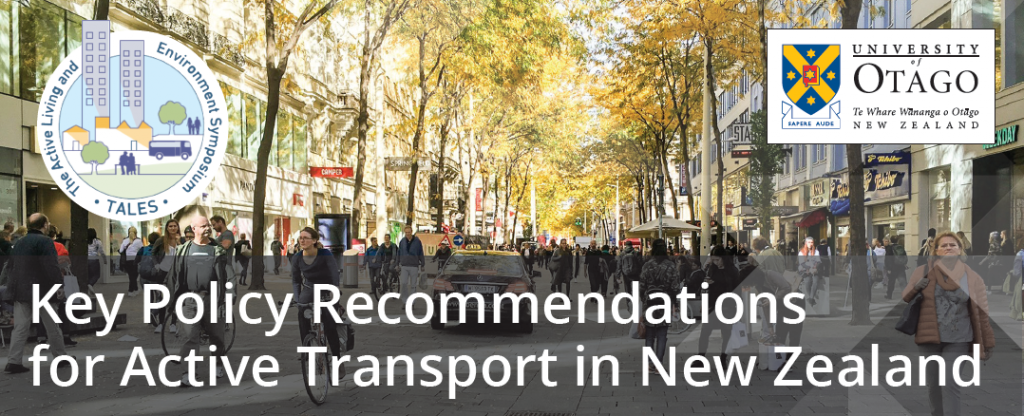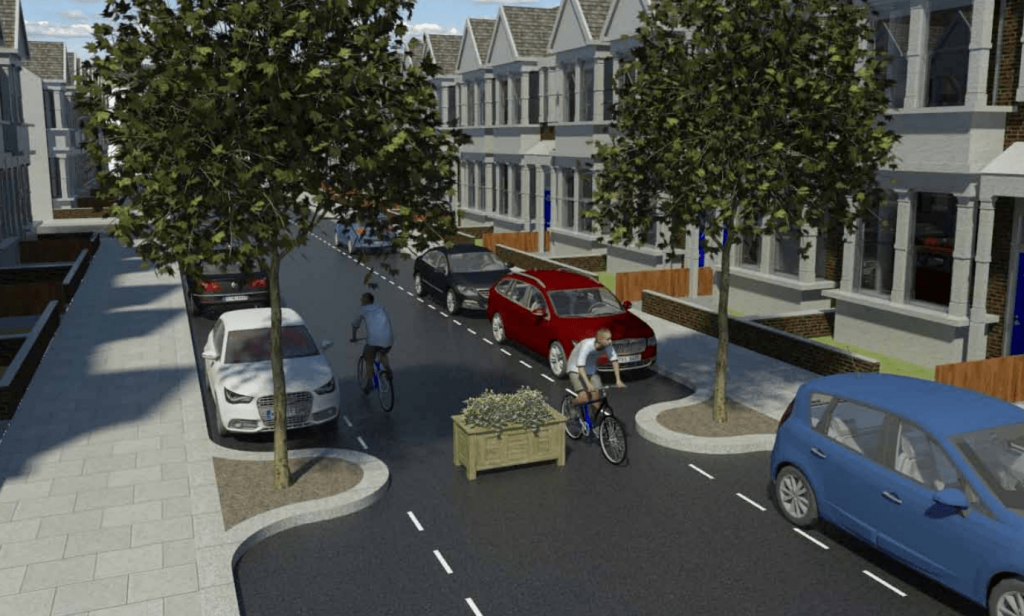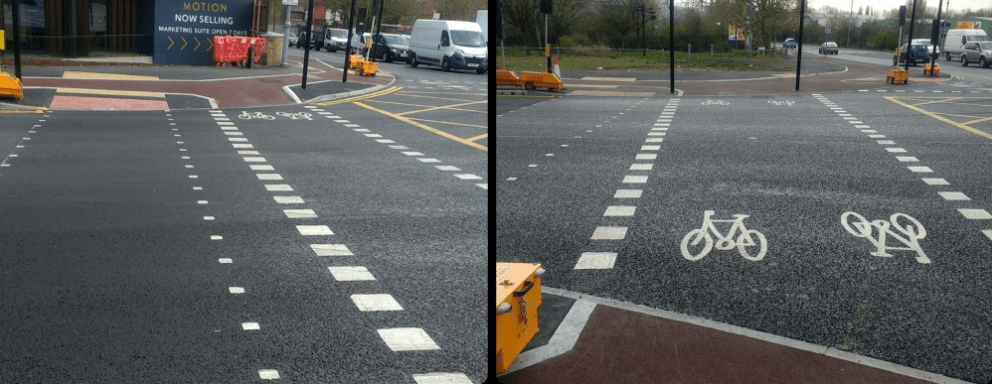Making streets liveable: what happens when you do it properly?
It was one of the UK’s most controversial “liveable street” retrofit initiatives (and they’ve had some biggies). Guest poster George Weeks looks at the story and results of Waltham Forest’s Mini-Holland. Part two of a two-part post
[Ed: Since 2014, the London Borough of Waltham Forest has brought Dutch street design to the Anglosphere and delivered people-friendly streets to London.
The first part introduced us to the origins and the eye-popping results. Now we look at what New Zealand can learn from Waltham Forest’s success and its struggles…]
New Zealand, this is you
We need to walk and cycle more; this requires safe, inclusive streets. In April this year the University of Otago published a major report on active travel: Turning the Tide – from Cars to Active Transport. To sum up: too much driving is harming us and the environment – a decisive mode shift is needed to favour public transport, walking and cycling.

The report makes NZ-specific recommendations to achieve this (see p. 11); these recommendations are very consistent with the delivery of Waltham Forest Mini-Holland. This has implications throughout New Zealand, both for existing urban areas and the design of new neighbourhoods. Think how many Mini-Hollands we could have here…
Waltham Forest’s experience has shown that Dutch street designs can be applied in other countries to increase walking and cycling. This requires stable resourcing, strong leadership and a willingness to engage meaningfully with local stakeholders.
We also have advantages in New Zealand. Gridded towns and cities, built at low-densities that make sense by bicycle. Public transport that would benefit from greater catchment. Plenty of roadspace to reallocate. And a willingness to adapt other countries’ ideas for our own benefit.
Political will
In March 2014 Waltham Forest was awarded £27m by Transport for London to transform its streets into a Mini-Holland. This was an initiative of the Mayor’s Vision for Cycling in London which was published in 2013 and marked a step-change in ambition levels, with funding to match.
Boroughs had to bid for this money. Two other boroughs (Enfield and Kingston-Upon-Thames) received similar Mini-Holland funding (I recommend researching them as well).
Compared to the prevailing “fighting-for-crumbs” nature of UK cycling campaigning, the boroughs’ Mini-Holland bids had to be truly visionary. They also had to be deliverable. Bids needed to be signed by either the Head of Council or Head of Transport. Political courage was absolutely critical and continues to be so.
Aims and principles
The overall aims of Waltham Forest Mini-Holland were:
- Return streets to local people (streets are for people!)
- Improve walking environment
- Enable cycling amongst all age groups and abilities [emphasis added]
Road and street design would systematically favour public and active transport. This ambitious approach was directly based on Dutch precedents. The Mini-Holland bid document incorporated:
- Low-traffic neighbourhoods, to be created by removing motorised through-traffic
- Protected space for cycling along main roads (to provide connections through the borough and to neighbouring boroughs)
- Fully-protected cycling space junctions on main roads (a UK first)
- Cycle parking in residential streets (mainly using hangers) and secure cycle hubs at rail and London Underground stations.

(While enabling residents to keep parking – taking more care, and getting good at 3-point turns or swapping to a nimbler car.)]
Design Quality
As well as political support, you need technical support. Until recently, UK cycling infrastructure was not known for its design quality. Mini-Holland proposals needed to draw on international (i.e. Dutch) best practice; this approach was finally gaining credence in 2012. A Mini-Holland Design Guide was produced, directly influenced by Dutch principles and written by transport consultant Jon Little, who had developed Waltham Forest’s Mini-Holland bid. This design guide was based on first-hand experience of cycling in the Netherlands and sought to bring a similar quality and consistency to Waltham Forest (2013, p. 17)
“We want to ensure that our proposals represent a step change in design, are consistent in approach and will deliver significant improvements to cycling, not just treat this programme as an opportunity to design more business-as-usual interventions that don’t challenge conventional design and modal priority.”
UK cycling provision at junctions tended to use combinations of advanced stop lines (ASLs) and shared-use pavements. This doesn’t provide an inclusive cycling environment. Better designs were needed and were developed. One of the largest projects in the Mini Holland programme is a 4.4km protected cycleway along Lea Bridge Road. This has introduced proper Dutch-influenced junctions to the UK, as seen below. Very easy to use, as we see in this video.

Public engagement
“When you push the status quo, it pushes back, hard.”
– Janette Sadik-Khan, 2016 Street Fight
For transformational projects like Mini-Holland, early public engagement is absolutely essential. Good designs aren’t much use on their own: if the public haven’t been engaged from the very start of the project, it is almost impossible to get anything built. A detailed engagement strategy was developed…and this become more sophisticated as the programme unfolded.
Components:
- Early engagement via open questions in a survey to find out how people felt about their neighbourhood and what issues needed tackling. No designs or even suggested interventions were included at this stage and this is important.
- Neighbourhood co-design workshops where residents added details of their local trips before being shown preliminary designs based on early engagement feedback.
- Public consultation on proposals based on all previous feedback and also the original aims of the programme During the consultation a number of public drop-in events would be held within the neighbourhoods concerned.
Successive Commonplace engagements obtained detailed public feedback on Mini-Holland. This provided clear, site-specific information and shaped the emerging street designs.
While Mini-Holland has attracted loud protests, the engagement process has succeeded because it legitimises the delivery of streets that people fundamentally want. No-one wants to live on a street with more pollution, worse safety, unhappy children and social isolation. Mini-Holland helps create streets that support better neighbourhoods.
To conclude
Waltham Forest Mini-Holland has, in its design, delivery and execution, brought about a substantial mode shift towards active travel at a rate of change that is unmatched anywhere in the English-speaking world.
Why don’t we try it out in New Zealand? Set up a Mini-Holland-like competitive bidding process for long-term monies. Evaluate the bids based on the recommendations in Turning the Tide. And deliver better public spaces, safer streets and access for all.
This post was originally published on Greater Auckland and is reproduced with thanks. See the original here.
Image credits
- Banner image by Waltham Forest Council
- Policy Recommendations by University of Otago
- Future image by LB Waltham Forest
- Cycle lanes by @deekinstow
Further Reading
Leave a comment